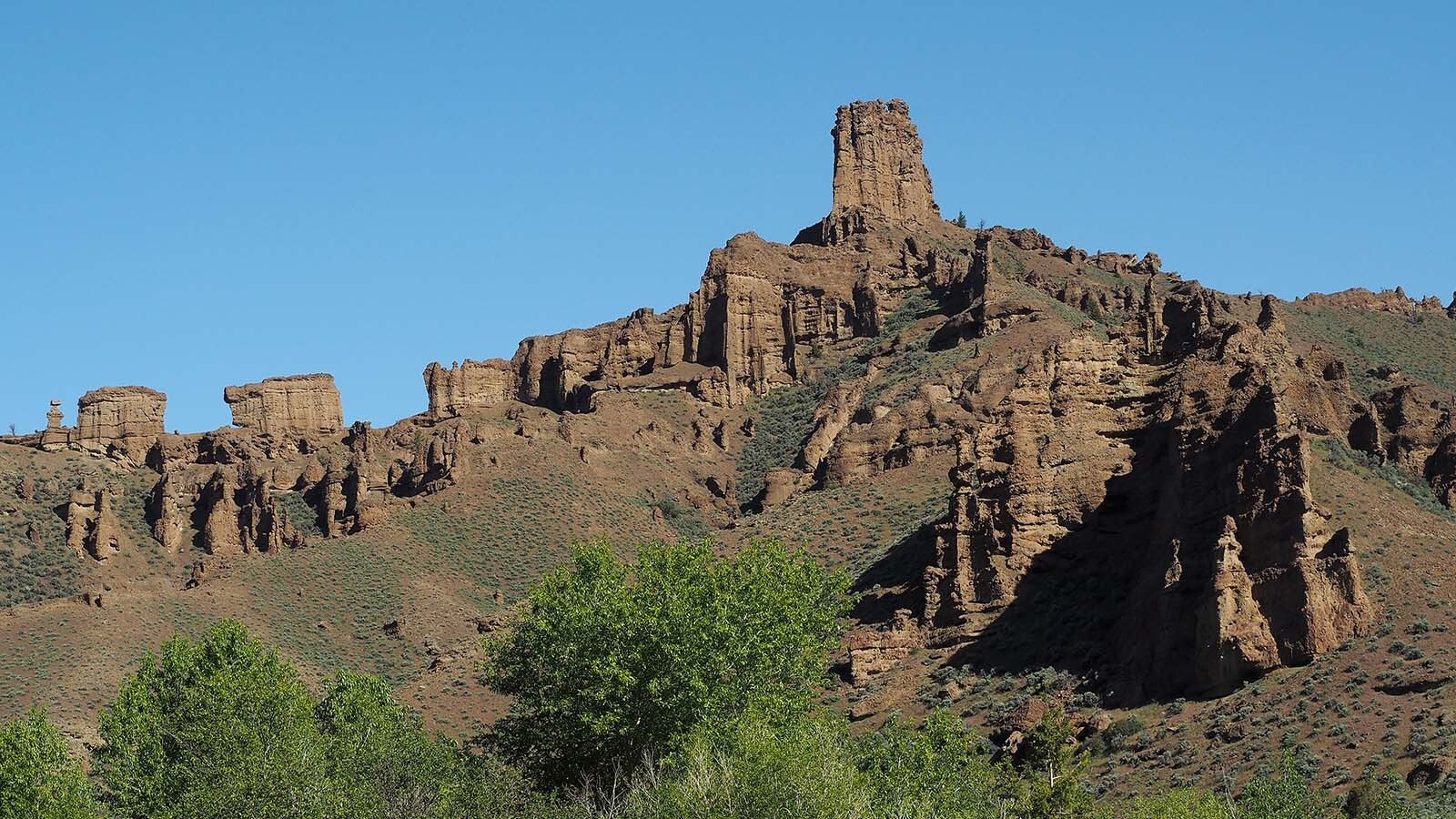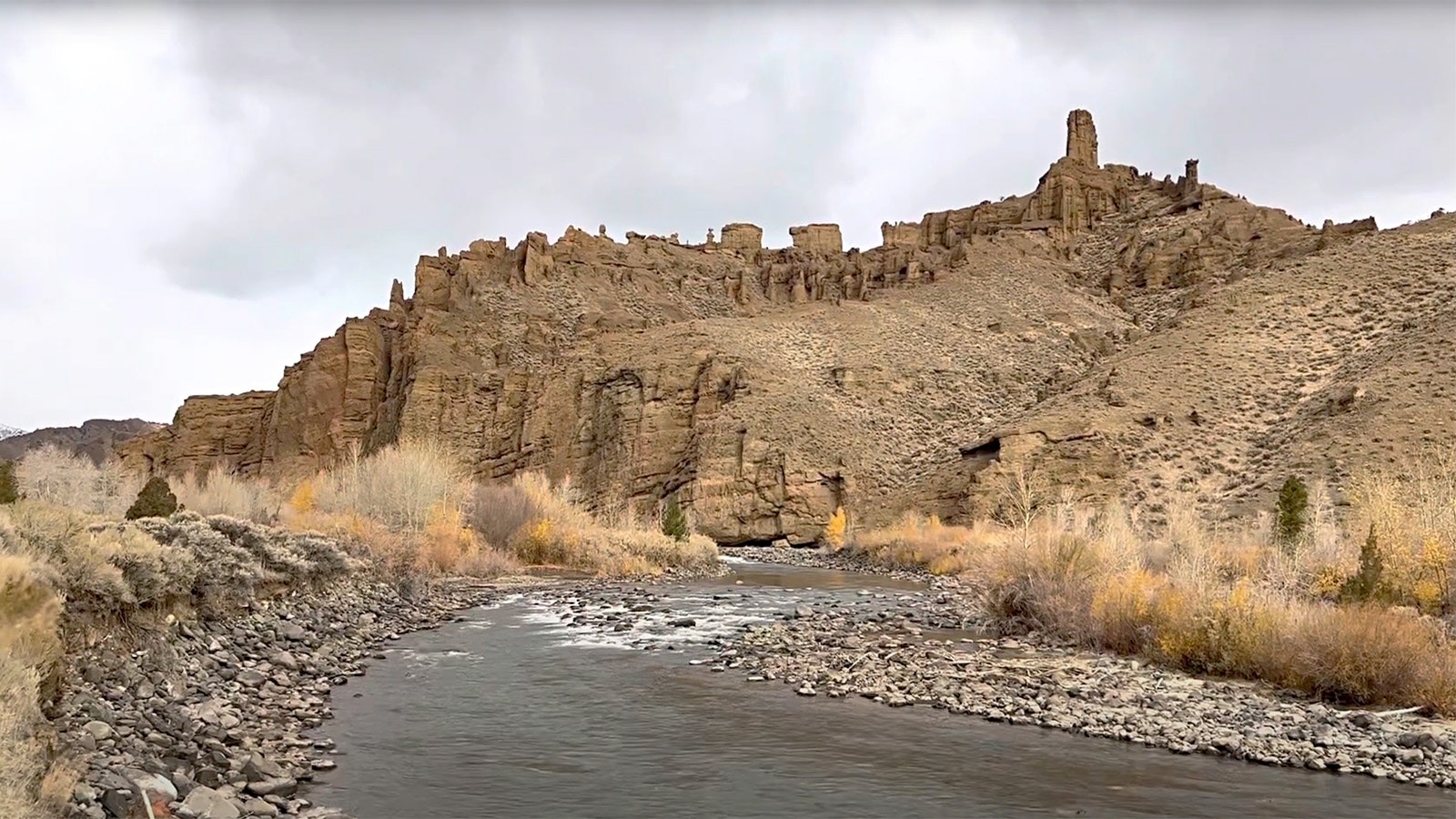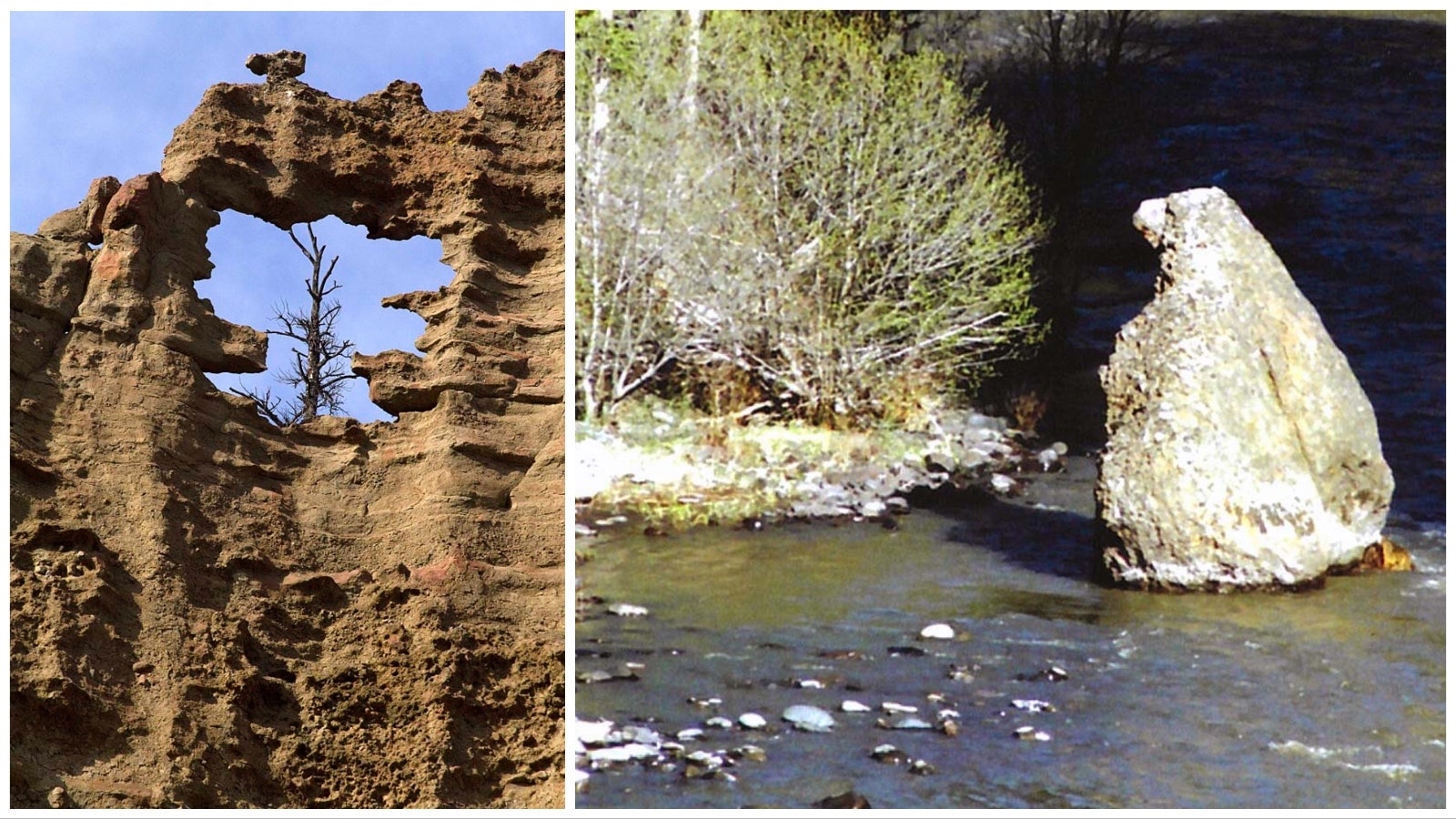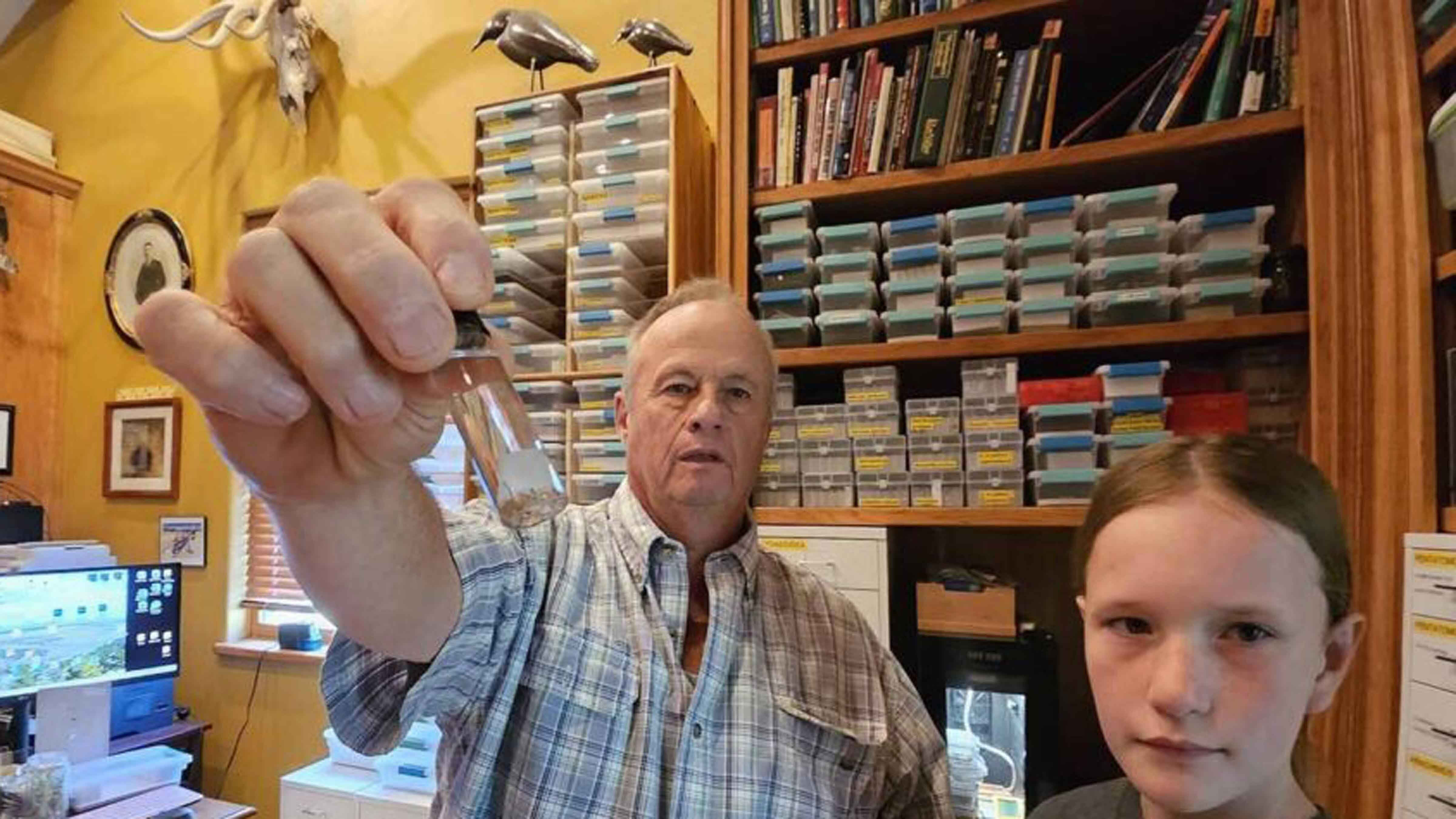The anticipation of a bucket-list visit through the otherworldly landscapes in and around Yellowstone is easier to handle just by looking out the window on the way to and from the nation’s first national park.
Doing that about 27 miles west of Cody along U.S. Highways 14/16/20 going to and from Yellowstone’s East Entrance through Shoshone Canyon, it’s hard to miss what appears to be an apocalyptic ruined city on the canyon’s ridge.
With its sharp angles and vertical cuts of volcanic rock that look like the skeletons of buildings in a post-nuclear holocaust, this ancient geologic formation has its own turnout on the highway to stop and take photos.
This is Wyoming’s Holy City.
Make A Pilgrimage
The rock formation became known as Holy City after tour groups visiting the Yellowstone area said its profile reminded them of ancient Jerusalem.
But it was legendary Cody guides and tour masters Fred Richard, then his son Jack, who started formally calling it Holy City, and the name stuck. In fact, the Richard family has a deep generational connection with the area and the many uniquely named rock formations along the canyon, like Fishing Bear Rock and Cameo Rock.
But Holy City is the most prominent and well-known, said Bob Richard, Jack’s son and himself a longtime authority on the area.
Now in his 80s, Bob spent more than 40 years leading tours of people — thousands of them — through and around Yellowstone National Park. When it comes to seeing whatever’s worth seeing on the area, Bob Richard literally wrote the book on it. He continues to train Yellowstone tour guides.

The Family Business
Bob Richard has known Holy City all his life, and before that his father and grandfather explored northwest Wyoming’s spectacular places.
That began when Fred Richard formed a partnership with Ned Frost in 1902 hunting for the railroad, Bob told Cowboy State Daily.
“They started doing trips, taking people on hunting trips and doing tours into Yellowstone,” he said. “In doing the tours, they’d take up to 150 on an 18-day trip from Cody to Yellowstone and back to Cody.”
Then, wagons and horseback were the usual modes of transportation, and the groups would make about 15-17 miles a day, maybe 20, Bob said.
Naming Holy City
It was these trips that led to naming the unique formation created millions of years ago through violent volcanic eruptions.
“As they spent two days going up the North Fork (of the Shoshone River), they named all the rock formations,” Bob said. “This went on over the years, and some of the names stuck.
“They have Laughing Pig, the Holy City, and next to Holy City on the lefthand side is a lady in her cabin, and there’s a fox, and just before the Holy City there’s a goose.”
By the time Jack Richard took over the guide business, the names had been established and were drilled into Bob before he could walk.
He recalls that as a child, he was allowed to drive his father’s truck through the canyon as long as he could recite the names of the rock formations while he drove.
“When I was 10, my dad let me drive the pickup to Yellowstone as long as I could remember all the rock formations,” Bob said. “I learned them very quickly.”

Never Gets Old
After serving in the military, Bob Richard returned to Cody and spent the next 40-plus years wearing out the highway between Cody and Yellowstone. A talented photographer, he’s captured thousands of images and shares some of them online.
And looking over to see Holy City and the other rock formations of the area never gets old, he said.
“Every time I go by it’s different because the sun is different,” he said. “In the morning, there’s lots of shadows and I see spires.”
And although Holy City got its name because most people say it resembles a silhouette of Jerusalem, that’s not what Bob sees.
“I don’t think of it as a city so much as I do a collection of spires,” he said. “That’s what it looks like to me.”
Bob said telling people about Holy City and the other natural wonders of the area also never gets old. His excitement is palpable talking about the geologic process it took to create it.
“It’s all from lava flows that traveled from sunlight into the North Fork 40 million years ago,” Bob said. “Then we had glaciers move through and washed them and left those formations, along with wind and rain.”
It would be safe to say nobody on the planet today has seen Holy City and the other sights between Cody and Yellowstone more than Bob Richard. Even so, that drive “is my favorite thing, just to go up the North Fork for a day or half a day.”
Want to know what the heck something is in Wyoming? Ask Managing Editor Greg Johnson and he’ll try to find out. Send your “What the heck is …” questions to him, along with high-quality horizontal photos of whatever it is to Greg@CowboyStateDaily.com.
Other stories in Cowboy State Daily’s “What The Heck …” series:
What The Heck … Is That 400-Foot Snaggle Tooth Rock North Of Rock Springs?
What The Heck … Is That Giant Mineral Dome In Thermopolis?
Why The Heck … Is A Camel The Mascot For A Wyoming High School?
What The Heck Is … That Old Stagecoach Stop Off I-80 Near Green River?
What The Heck Is … That Airplane On A 70-Foot Pole Along I-90 In Wyoming?
What The Heck Is … That 30-Foot Virgin Mary Statue On I-80 At The Nebraska Border?
What The Heck … Is That Giant Face On The Hill Overlooking Green River?
What The Heck Is … That 60-Foot Pyramid In the Middle Of Nowhere Off I-80?
What The Heck Is … The Vore Buffalo Jump Along I-90 In Northeast Wyoming?
What The Heck Is … With Betty Boop, Big Boy And That Sinclair Dinosaur North Of Cheyenne?
What The Heck Is … That Giant Abraham Lincoln Head Overlooking I-80 At The Top Of Sherman Hill?
What The Heck Is … That Lonely Grave On A Hill Overlooking Interstate 80?
What the heck is … That Lonely Tree Growing Out Of A Rock In The Middle Of I-80?
What The Heck Is … That Lonely Big Boy Statue In the Middle Of A Field In Wapiti, Wyoming?
What The Heck Is … That Giant 13.5-Foot-Tall Head On A Corner In Laramie, Wyoming?
Greg Johnson can be reached at greg@cowboystatedaily.com.









